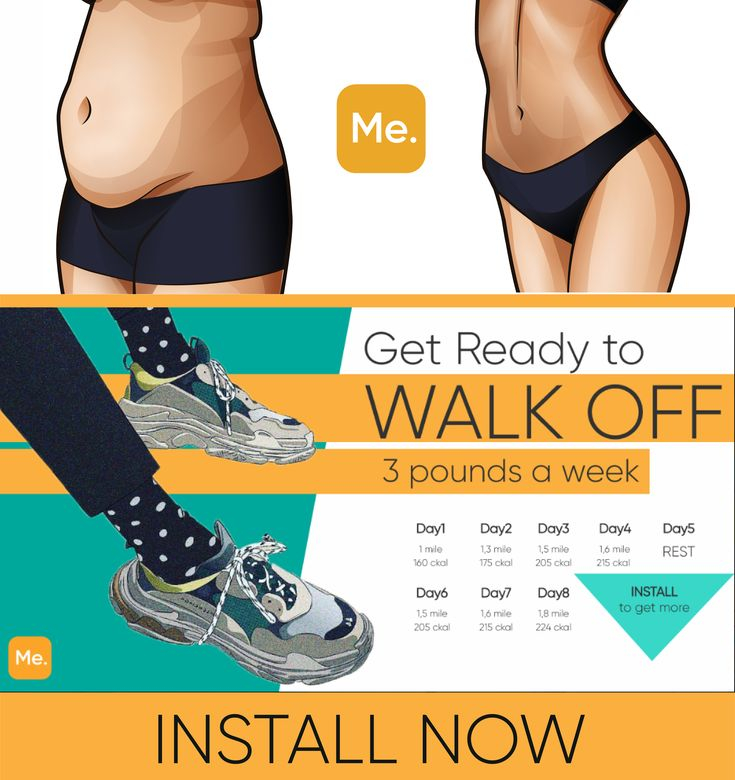How Long Does It Take To See Results From Walking?
So, you’ve decided to lace up your walking shoes and start incorporating more steps into your daily routine. But you’re probably wondering, how long will it take before you start seeing results? The good news is that walking can yield noticeable benefits for your body and overall well-being, but just how long it takes can vary from person to person. In this article, we’ll explore the factors that can influence your progress and give you a better understanding of what to expect on your walking journey. Get ready to put your best foot forward and discover the transformative power of this simple yet effective exercise.
Factors Affecting Time to See Results
When it comes to walking, the time it takes to see results can vary depending on several factors. Understanding these factors can help you set realistic expectations for your journey towards achieving your fitness goals. Here are the key factors that can influence the time it takes to see results from walking.
1. Fitness Level
Your current fitness level plays a significant role in how quickly you will start seeing results from walking. It’s important to consider your baseline fitness level, which includes factors such as muscle strength, endurance, and cardiovascular health.
Baseline fitness level
If you are already active and have a relatively high fitness level, you may notice improvements in your overall fitness sooner. On the other hand, if you are starting from a lower fitness level, it may take a bit longer to see noticeable changes. Regardless of your starting point, remember that every step you take is a step towards better health.
Muscle strength and endurance
Walking regularly can enhance your muscle strength and endurance over time. As you walk, the muscles in your legs, hips, and core work to propel you forward and support your body. With consistent walking, these muscles gradually become stronger, allowing you to walk for longer distances without feeling fatigued.
Cardiovascular health
Walking is an excellent cardiovascular exercise that can improve your heart health and overall fitness level. Regular walking sessions help strengthen your heart muscles, improve blood circulation, and increase the efficiency of your cardiovascular system. As a result, you may experience improvements in your cardiovascular health, such as a lowered resting heart rate and improved endurance.
2. Intensity and Duration
The intensity and duration of your walking sessions are crucial factors that determine how quickly you will see results. While any amount of walking is beneficial, paying attention to the intensity and duration can help optimize your progress.
Moderate intensity vs. vigorous intensity
Walking at a moderate intensity, where you can hold a conversation but feel slightly breathless, is generally recommended for overall health benefits. If you’re looking to expedite your results, you may consider incorporating periods of vigorous intensity into your walks. This could involve adding short bursts of faster-paced walking or including uphill sections during your route.
Duration of walking sessions
The duration of your walking sessions also plays a role in the timeframe to see results. Aim for a minimum of 30 minutes of walking per day for most days of the week. However, if you’re looking to enhance weight loss or achieve specific fitness goals, gradually increasing the duration of your walks can be beneficial. You may start with 30 minutes and gradually work your way up to 60 minutes or more.
Frequency of walking
Consistency is key when it comes to seeing results from walking. Ideally, you should aim to walk at least 5 days a week. By maintaining a regular walking routine, you give your body the opportunity to adapt and improve over time. Remember that even if you start with shorter walks, it’s crucial to be consistent and gradually increase the frequency as your fitness level improves.
3. Consistency
Consistency is often the x-factor between those who see significant results from walking and those who don’t. Developing a regular and consistent walking routine is essential for progress.
Regular and consistent walking routine
Having a regular walking routine means that you commit to walking on specific days and times each week. This routine helps establish a habit that becomes easier to maintain as time goes on. Find a schedule that works best for you and prioritize your walking time, just like any other important appointment in your day.
Tracking daily steps
Using a pedometer or a fitness tracker can be a valuable tool for tracking your daily steps and monitoring your progress. Aim for a goal of 10,000 steps per day, but remember that every step counts. Whether you’re getting your steps in during dedicated walking sessions or by being more active throughout the day, monitoring your daily steps can provide motivation and accountability.
Sticking to a schedule
Committing to a schedule and sticking to it is crucial for consistency. Life can get busy, and it’s easy to make excuses or prioritize other activities over your walking routine. However, by prioritizing and making walking a non-negotiable part of your daily or weekly schedule, you’re more likely to stay on track and see the results you desire.

4. Age and Health
Age and pre-existing health conditions can also impact the timeline for seeing results from walking. It’s essential to consider these factors and make any necessary adjustments to ensure safe and effective progress.
Effect of age on results
As we age, our bodies naturally undergo changes that can affect our ability to see results from exercise, including walking. However, that doesn’t mean that walking is any less effective as a form of exercise. It may take a bit longer to notice changes, but with consistency and patience, you can still achieve your goals.
Pre-existing health conditions
If you have any pre-existing health conditions, it’s crucial to consult with your healthcare provider before starting a walking routine. They can provide personalized recommendations and ensure that walking is safe for you. Depending on your condition, they might suggest modifications or additional exercises to incorporate into your routine.
Caution for beginners and older adults
For beginners and older adults, it’s important to start slowly and gradually increase the intensity and duration of your walks. Listen to your body and pay attention to any discomfort or pain. It’s normal to experience some muscle soreness, but if you feel any sharp or prolonged pain, it’s best to consult with a healthcare professional.
5. Body Composition
Walking can impact your body composition, which includes factors such as weight loss, muscle toning, and changes in body fat percentage. However, the timeline for seeing these changes can vary for each individual.
Weight loss and body fat percentage
Walking can be an effective tool for weight loss when combined with a balanced diet. Depending on your starting weight, current diet, and walking routine, you may start to notice changes in your weight and body fat percentage within a few weeks or months. Remember that sustainable weight loss involves creating a caloric deficit over time, so be patient and focus on making healthy lifestyle changes rather than chasing rapid weight loss.
Muscle toning and strength
Walking engages multiple muscle groups, particularly in your legs and core. Over time, this can contribute to improved muscle tone and overall strength. However, building noticeable muscle tone may take longer compared to traditional strength training exercises. You may start to feel stronger and notice improved muscle tone within a few months of consistent walking.
Body composition changes
In addition to weight loss and muscle toning, walking can also have positive effects on body composition. Even if the number on the scale doesn’t change drastically, walking helps to redistribute your body fat and build lean muscle mass. This can result in a more sculpted and defined appearance, even if your weight remains relatively stable.

Expected Timeframes for Different Goals
While results from walking can vary among individuals, here are some general timeframes to keep in mind for different goals.
Weight Loss
When it comes to weight loss, a sustainable and healthy rate is about 1-2 pounds per week. By combining walking with a balanced diet and creating a caloric deficit, you can expect to see noticeable weight loss within a few weeks or months, depending on your starting weight and other factors.
Cardiovascular Fitness
Improvements in cardiovascular fitness can be seen relatively quickly, often within a few weeks of consistent walking. You may notice increased endurance, a lowered resting heart rate, and improved aerobic capacity. Over time, these changes can greatly enhance your overall cardiovascular health.
Mental Health Benefits
Walking has numerous mental health benefits, including stress reduction, improved mood, and increased mental clarity. Many individuals report feeling the positive effects of walking on their mental well-being almost immediately, making it an excellent form of self-care.
Muscle Toning
While walking primarily targets the muscles in your legs and core, you may start noticing improved muscle tone and definition within a few months of regular walking. To enhance muscle toning, consider incorporating strength training exercises that target different muscle groups into your routine.
6. Weight Loss
If weight loss is your primary goal, walking can be an effective tool when combined with a balanced diet.
Caloric deficit and weight loss
To lose weight, you need to create a caloric deficit, which means consuming fewer calories than you burn. Walking helps increase your calorie expenditure, contributing to the creation of a caloric deficit. By incorporating walking into your routine and paying attention to your diet, you can achieve sustainable and gradual weight loss over time.
Combining walking with a balanced diet
While walking can help create a caloric deficit, it’s essential to pair it with a balanced diet to see the best weight loss results. Focus on consuming nutrient-dense foods, controlling portion sizes, and avoiding excessive calorie-dense foods. Remember that a sustainable lifestyle change is key to long-term success.
Sustainable and gradual weight loss
It’s important to emphasize that sustainable and gradual weight loss is more beneficial and healthier for your body than rapid weight loss. Aim to lose around 1-2 pounds per week, as this helps ensure that you’re losing primarily fat while preserving muscle mass. Remember that sustainable weight loss results from a combination of healthy eating habits, regular physical activity, and a positive mindset.

7. Cardiovascular Fitness
Walking is a fantastic way to improve your cardiovascular fitness and enhance your heart health.
Improvement in heart health
Regular walking sessions, particularly at a moderate intensity, can significantly improve your heart health. As you consistently engage in cardiovascular exercise like walking, your heart becomes stronger and more efficient at pumping oxygenated blood throughout your body. This leads to improvements in heart health, including a reduced risk of cardiovascular diseases.
Aerobic capacity and endurance
Aerobic capacity refers to your body’s ability to utilize oxygen efficiently during exercise. Regular walking can help improve your aerobic capacity, allowing you to perform physical activities with less effort and for longer durations. As you progress in your walking routine, you may find that you can walk at a faster pace or for longer distances without feeling as winded or fatigued.
Reduced risk of chronic diseases
Walking can contribute to a significant reduction in the risk of various chronic diseases, such as heart disease, diabetes, and certain types of cancer. Engaging in regular physical activity like walking has been shown to lower blood pressure, decrease cholesterol levels, and improve insulin sensitivity. By incorporating walking into your lifestyle, you are taking proactive steps towards better long-term health.
Tips to Maximize Results
To maximize the results you see from walking, consider implementing these tips into your routine:
Maintain proper form and posture
Maintaining good posture and form while walking helps ensure that you’re engaging the correct muscles and minimizing the risk of injury. Stand tall with your shoulders relaxed, look straight ahead, and swing your arms naturally. Focus on landing on your heel and rolling through your foot as you take each step.
Incorporate interval training
Interval training involves alternating between periods of higher intensity and lower intensity during your walks. This can help increase your calorie burn, boost your cardiovascular fitness, and enhance your overall results. For example, you could alternate between a brisk walk and a slower recovery walk for specific intervals throughout your session.
Gradually increase intensity
As you become more comfortable with walking, gradually increase the intensity of your workouts. You can do this by increasing your walking pace, incorporating inclines or hills, or adding additional challenges, such as carrying light hand weights or wearing a weighted vest. By progressively challenging yourself, you’ll continue to see improvements in your fitness level.
Cross-training and strength exercises
While walking provides many benefits, incorporating other forms of exercise into your routine can help target different muscle groups and prevent plateaus. Consider adding strength training exercises or cross-training activities like cycling or swimming to your weekly schedule. This variety helps keep your routine engaging and can lead to additional benefits for your overall fitness.
Stay hydrated and fuel your body
Staying hydrated is crucial for optimal performance during your walks. Drink water before, during, and after your walks to maintain proper hydration levels. Additionally, fueling your body with balanced meals and snacks rich in nutrients will provide the energy needed to support your walking routine.
Take rest days
Rest is an important component of any fitness routine. Allow your body time to recover and repair itself by incorporating rest days into your schedule. This helps prevent overuse injuries and gives your muscles the opportunity to rebuild and become stronger. Listen to your body and don’t hesitate to take an extra day off if you’re feeling fatigued or experiencing any discomfort.
In conclusion, the time it takes to see results from walking depends on various factors such as your fitness level, intensity and duration of your walks, consistency, age and health, and body composition. By understanding these factors and implementing the tips mentioned, you can maximize your walking routine and achieve your fitness goals. Remember, walking is a journey, and every step you take counts towards a healthier, happier you. So lace up those walking shoes, embrace the journey, and enjoy the positive changes that walking will bring to your life.


